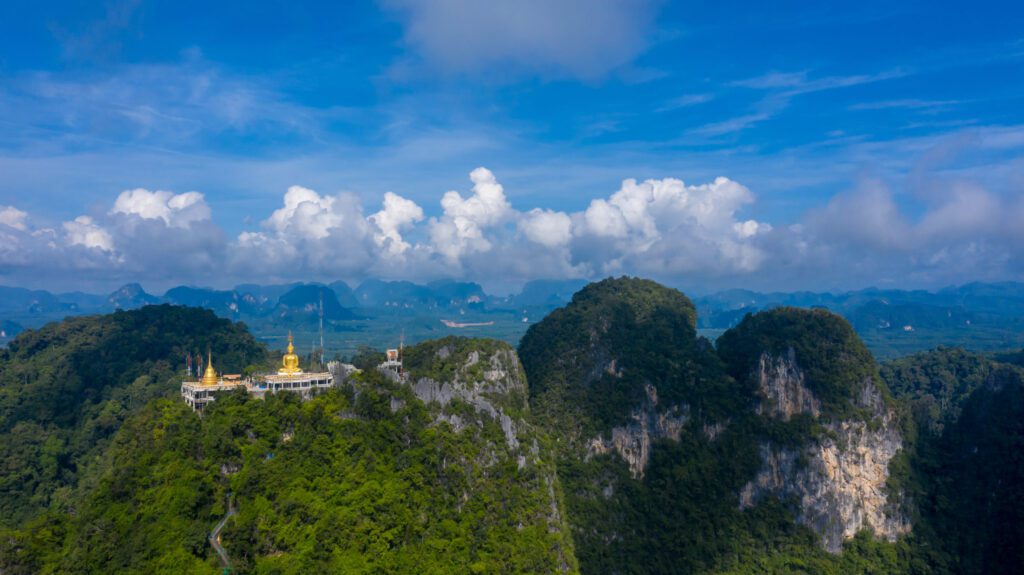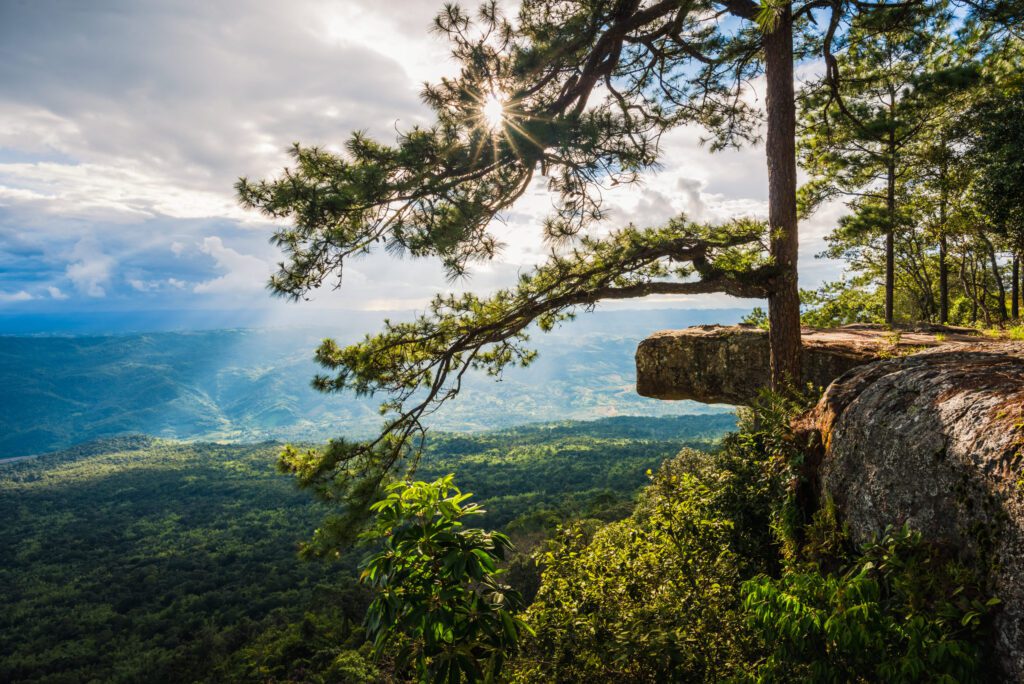a guide to Loei
Beat the Heat in Loei, a Mountainous Border Province
You’re above it all. It took you five hours to climb Pha Nok Aen, but the gorgeous view makes it all worth it. From the high point of the mountain, you watch the clouds roll by, like a blanket of mist covering Thailand’s northeast countryside.
Imagine riding on a Mekong Riverboat as you’re getting ready to watch the sunset over the mighty river. The setting sun paints the sky in riotous shades of purple and orange. As night settles in, you make your way back to Chiang Khan for an evening of bar-hopping through the town’s quaint Walking Street.
Between mountains and the Mekong River, the Loei Province in Northeastern Thailand feels blissfully removed from the sun, sea, and sand that tourists know the country as.
Loei attracts locals and tourists as it is a refreshing getaway from the lowlands’ heat and humidity. It’s time for tourists to take a closer look at this border province and its fantastic out-of-the-way adventures.
Getting there
Daily flights from Bangkok-Don Mueang Airport take up to an hour and a half to cover the distance from the capital to Loei. Buses to Loei depart from Mo Chit 2 Bus Terminal, taking a little under nine hours to cover the 520km distance from Bangkok.
Tuk-tuks, songthaews, and local buses can take you from Loei town to Chiang Khan and other destinations in Loei.
The best time to visit Loei is during the Phi Ta Kon Festival, a three-day festival held in Dan Sai between March and July. The festival is a giddily anarchic experience, with locals dressed in monstrously gorgeous masks and wielding phallic objects as an aid to fertility.
Getting around
The best accommodations for travelers can be found at Loei town and Chiang Khan. At the latter, guests can experience the most authentic local stay at Chai Khong Road’s teakwood hotels.
Phu Kradeung visitors may also inquire at the office about camping on the grounds. The administration also offers the use of camping facilities like tents and sleeping bags.
The Thai Dam Cultural Center offers homestay experiences for travelers, though inquiries must be made at least a week in advance. Meals are provided but must be paid for extra.
Things To Do in Loei
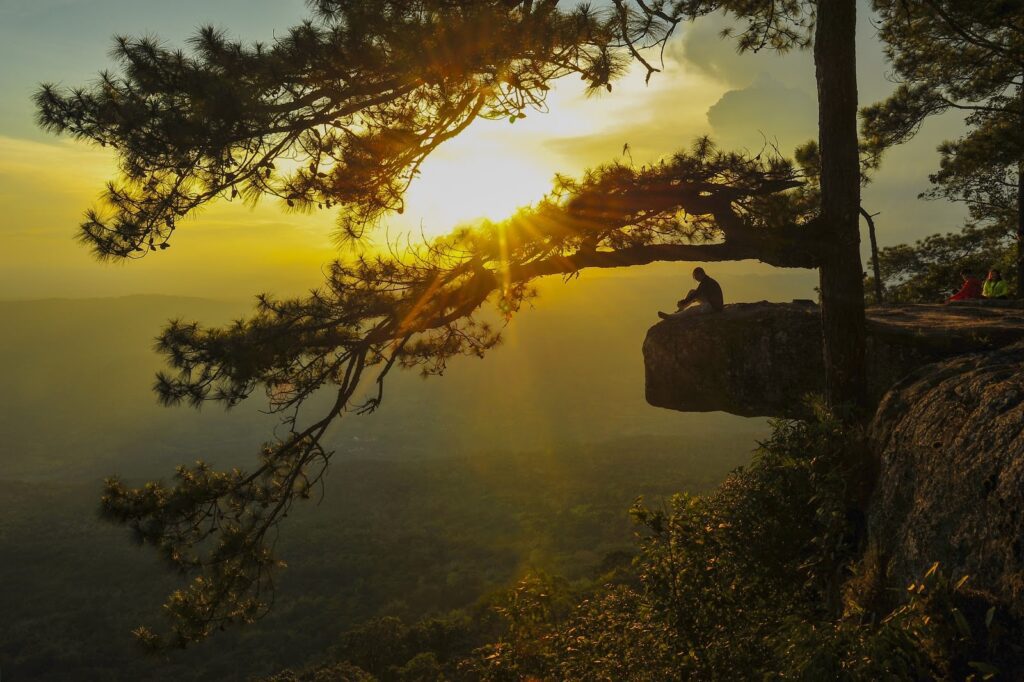
Phu Kradeung, Thailand’s second oldest National Park, is Loei’s most popular tourist destination. Even though you’ll have to pay a high price to climb it, it’s worth it for the view at the top.
The five-hour trek to the Pha Lom Sak viewpoint is 8km long (and a punishing 5km uphill). Still, the reward for dedicated hikers is to get their Instagrammable shots of an overhanging stone slab over a cliff, not to mention Loei’s best sunset views.
Starting at 5 am, overnight campers at the park can hike to the Pha Nok Aen viewpoint, which yields a sunrise over a sea of clouds that parts to reveal Loei’s mountains and fields.
Plant-savvy hikers will recognize many temperate-climate plants along the trails, including red maple trees whose leaves turn a brilliant red from November to December. Beyond these viewpoints, the trails along Phu Kradeung lead to hidden waterfalls like Phen Phop, Khun Phong, and Than Sawan.
Phu Kradeung National Park is open from 8 am to 4:30 pm every day, except during the resting season between June to September, which allows the ecosystem to regenerate. A 400 baht ($12.80 USD) entrance fee will be charged at the gate; camping grounds and facilities are available for rent.
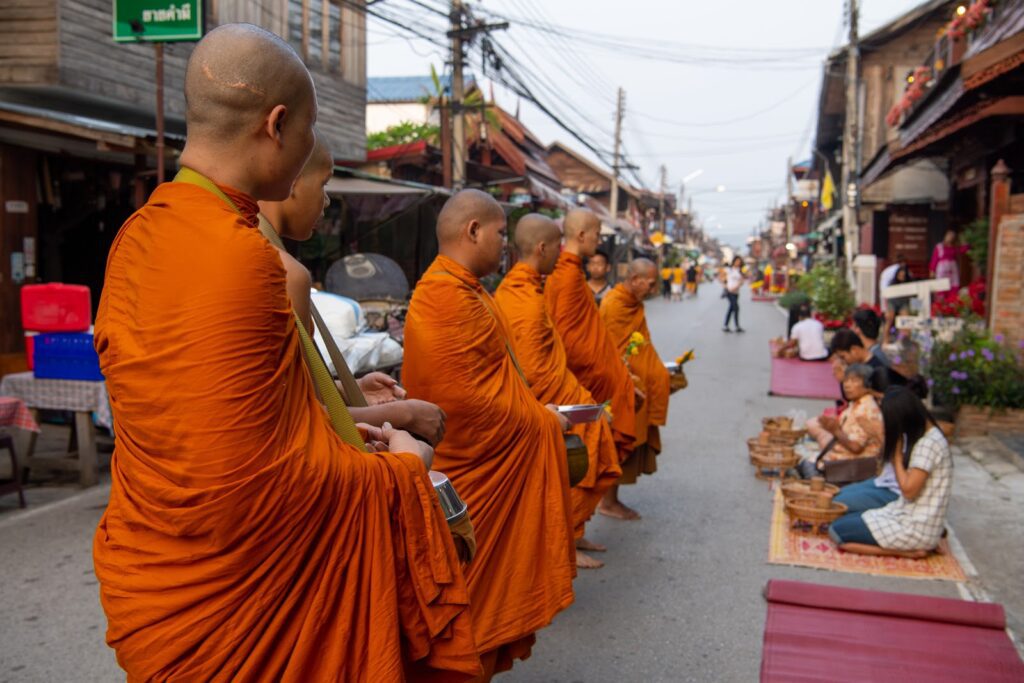
This relaxed little district along the Mekong River is a high staging point for travel throughout the rest of Loei, with few key attractions no more than a few hours drive from the town center.
From the town, you can hire a boat to cruise down the Mekong River during sunset. The wharf is pretty close to Chai Khong Road, where a night market crops up between the street’s century-old teak houses. Shop for local products and dine on Loei delicacies like mieng kham (savory leaf wraps) and khaow chee (grilled sticky rice). The night market is open from 5 pm to 9 pm and runs from Soi 5 to Soi 20.
The Wat Sri Kun Mueng temple, located north of Chiang Khan Market, is worth visiting to see the blend of Lan Chang and Lanna style art that decorates its ubosot (ordination hall).
Early risers can venture out to Phu Thok Hill to see the sea of clouds over Chiang Khan and the Mekong River. Alternatively, you can observe the daily procession on Chai Khong Road, where locals put sticky rice into passing Buddhist monks’ alms bowls.
A longer drive from Chiang Khan takes culture-savvy visitors to the Thai Dam Cultural Village, home to the Thai Dam ethnic community whose traditions, culture, and crafts can be seen and experienced first-hand here.
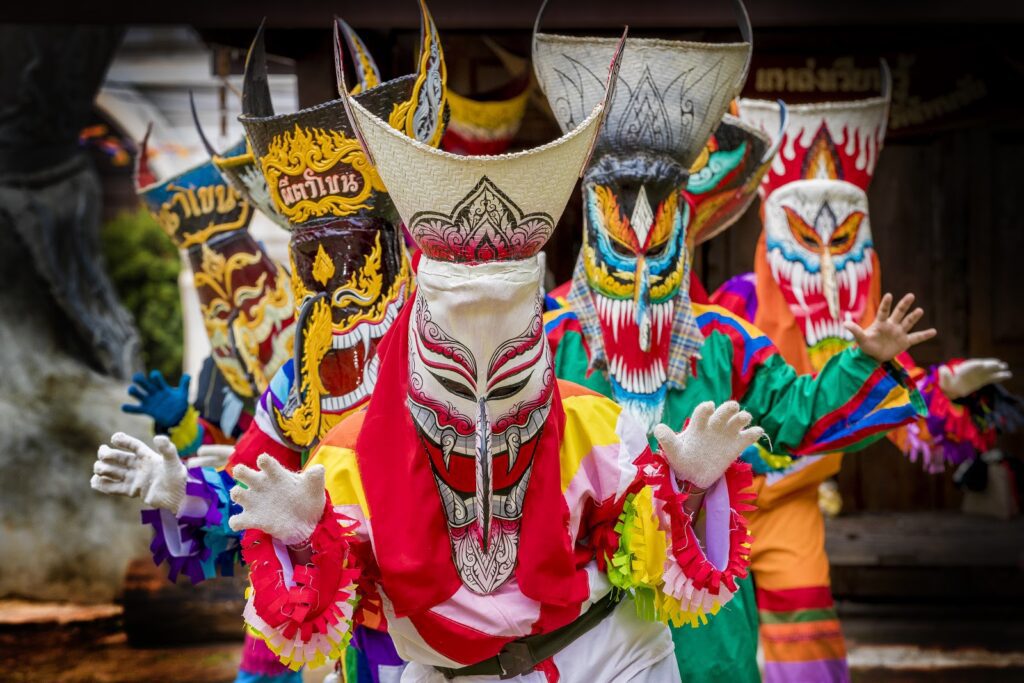
When you visit the town of Dan Sai, there are a lot of cultural encounters you should experience. These range from visiting ancient temples to participating in a raucous festival inhabited by ghost masks wearing revelers.
The Phra That Sri Song Rak pagoda is almost 500 years old, which was built to commemorate the alliance between the kings of Ayutthaya (present-day Thailand) and Si Sattana Khanahut (Vientiane). Visitors aren’t allowed to wear red or bring red offerings—the color represents violence, which doesn’t work for a temple dedicated to peace.
Wat Neramit Wipatsana is a temple of a more recent vintage, located close to Phra That Sri Song Rak. The temple is surrounded in a stunningly manicured garden, dotted with statues and laced with walking trails.
The Phi Ta Khon Museum curates objects that represent the local Bun Luang and Phi Ta Khon Festivals, including the famously smiley Phi Ta Khon masks. The museum is a prelude to the festival itself, as it’s a local take on the Buddhist festival of Bun Phawet that takes place between March and July.
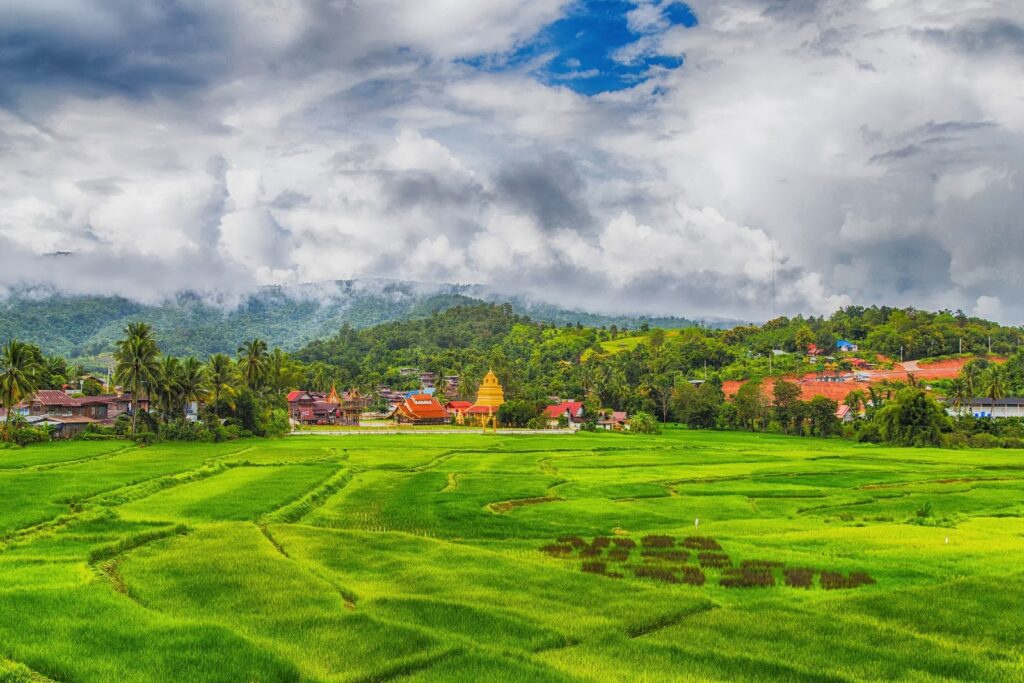
Being the westernmost district in Loei, Na Haeo is perfect for those who want to experience a peaceful and slow life with the locals. It’s a small traditional village in the central valley near Dan Sai, with no shops or taverns. The locals know each other and are friendly to visitors.
The rice fields in the valleys in Loei are a beautiful sight to see in Thailand, especially in Na Haeo. If you visit from July to August, the rice paddy fields are lush green, while from October to November they turn to a golden yellow.
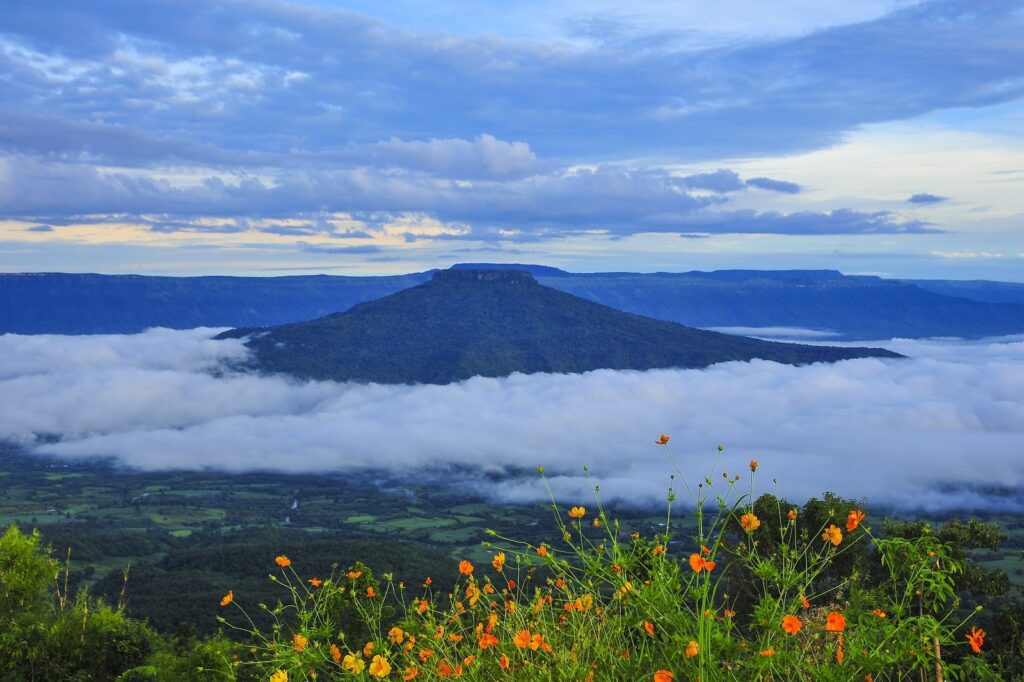
The “coldest spot in Siam” can be found at the summit of Phu Ruea, crowning the sail-shaped cliff whose peak rises over 1,400m above sea level. The view of the sea of clouds from the summit can hardly be matched elsewhere, which is more accessible for visitors than Kradeung since cars can drive to the peak.
If you are planning to visit during the winter months from November to January, make sure you bundle up as it gets cold; you can see frost forming on the pine forests around the mountain.
Close to the entrance, you’ll find the Poinsettia Garden and its distinctive flowers, blanketing the ground with red and green blossoms. The garden hosts the annual Poinsettia Festival, which is held during the winter months.


